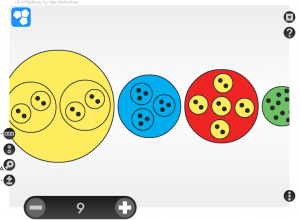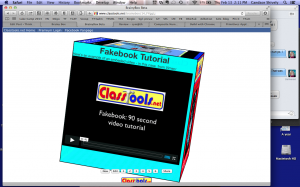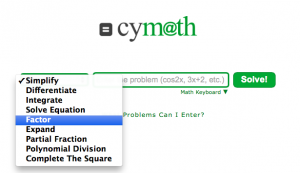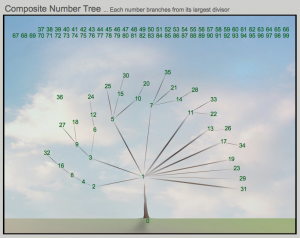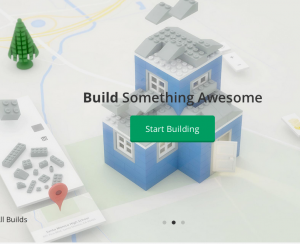Are you and educational technology coach? Are you the go-to teacher for all things tech in your hallway, department, or building? Have you been assigned a couple of periods a day to bring every other teacher up to speed using tools well as a  seamless part of learning? Have you had successes and challenges doing all this? You are definitely NOT alone!
seamless part of learning? Have you had successes and challenges doing all this? You are definitely NOT alone!
Last night I took part in an online sharing session for educational technology coaches. Their job titles were all different, but the participants were all teachers who work side by side with their colleagues, helping them teach effectively — using technology to help where appropriate. The discussion was a firehose of great ideas, and I was lucky to simply chime in once in awhile as the moderator. You can watch a recording of this free OK2Ask® session here (uses Adobe Connect) or simply enjoy this post, the first installment sharing what came out of the fire hose.
I have used initials and state abbreviations (the first time they “speak”) to give credit for ideas and included my own thoughts in italics. I did edit, [add words], and rearrange the order a bit for clarity. Thank you to all these collaborative folks for their ideas!
Challenge: Ideas and resources to motivate teachers with varied tech expertise
JS (SC): Have teacher led sessions sharing what they know.
CD (OR): Front load information for the teachers that you know will have trouble. They usually know it is hard for them and willing to do work ahead of time (and grateful to not feel lost during the training).
JZ (PA) Inservices are a real challenge! We did try splitting into several sessions, but that’s not always possible time – wise.
MB (UT): I do a lot of one-on-one with my teachers.. Then I can address their exact needs and levels. 15 minutes with one teacher is sometimes more effective than a whole groupl
KB (PA) Leveled activities for participants
PH (AZ): teacher led sessions
NA (FL): Meet with small groups of teachers with similar skills / needs
RP (AZ): Teachers should be required to bring their laptop to the session to hands on not just watching
TJ (NC): Hands on training of tools
MJ (NY): I try to make it fun for all.
SR (NY): I now have a person who helps me from our church. We are working on this challenge together.
DS (IN): I am trying to learn at the same time.
KB: Provide an environment where failure is OK. Promote problem solving.
CD: You can also go into their classrooms and model how to use the technology with the students. Once the students get a taste of it, they may push their teacher to learn more.
JS: We ask teachers to differentiate so we must model. The 1 to 1 for a short period is very effective.
Challenge: Defining my role as a coach, not a repair person (or playing BOTH roles if that is your job!)
MB: I am the go-to repair person, but then I always ask teachers what I can help them with.
NB: Set times for repairs (student or teacher) and then time to meet with teachers on developing tech skills
Use a repair ticket system—many schools have this.
TJ: instead of fixing problems for them I have started walking them through the process of fixing it themselves.
KB: I have “Techsperts,” a student tech team. They provide supports as well. Helps teachers with [classroom] management. Many issues with integration are management. “Trusted” students help solve minor issues.
JZ: I play both roles, which makes it harder to differentiate.
If you play both roles, bring along TWO HATS and change them to show your role.
KB (PA): Birthday hats…. you can decorate them, too!
Re ticket systems and “fixes”:
SR: My colleague and I have developed a trouble ticket. Still those timid teachers have the most trouble filling them out. Maybe I should make a simpler form.
DS: I try to explain as I fix. That way they can be the expert at their grade level.
KB: Make “Please meet me face-to-face” an option in the ticket.
CD: Could you walk them through a fake ticket a few times so that when they need to fill it out independently, they won’t feel intimidated.
KB: Ask three before me! [use this same rule that we use with KIDS]
NA: Their problems are always an emergency (to them)
JS: Some say, “It is easier to call you”
MB: teachers will email or text me with problem. then I do the ticket
NA: our ticket asks how have they tried to resolve problem first
MB: I also have teachers do a ticket when i do inservice.
LD (OR): The students are pretty knowledgeable on the computer, sometimes with direction, they can solve their own computer problems
KB: Provide a list of tutorials or common fixes. It may be there before they contact you.
CD: You could even scaffold the help. First time they watch you. The second (and maybe 3rd) time they do it with your guidance. Next time they do it with you there, but not helping unless they need it.
Challenge: Helping teachers continue to grow – in both teaching and tech use
KB: Grow & Glow time [teacher sharing time when they talk about something they did in class]. Can be small groups or similar or mixed ability [maybe a grade level or department?
JS: I hold departmental sessions for teachers to share
NA: once a month we have an entire faculty mtg and we have 4-5 teachers share things that they have learned / used with their students. Takes pressure off me. encourages teachers to try something new
CD: make them the experts!
JS: having [training] sessions recorded is a great plus [so teachers can revisit]
CD: If you are able to get into the classroom and “catch” them using some sort of technology, you can compliment their use and boost confidence. It is like the “catch them being good’ idea we do with kids. Even if it is just email or creating a simple document.
KB: Provide “Techtastic” tags for [teacher] badge lanyards if they are caught using tech
MB: I brag about my teachers to the other teachers — so they know who to ask when I’m not available.
NA: I also ask teachers to send me pic / videos of great uses of tech with their students so we can show it off
Encourage teachers to tell students the technology infused lesson is under scrutiny. They will make an even greater effort to “make it work” and show that they are learning.
SR: Yes. Use the kids as motivators.
RP: Surveying teachers to find out what they most want help with is wise
What do ETCs WISH for?
Here is an online wishlist this group created. Feel free to add YOUR wishes: http://padlet.com/wall/29gq78x0vw
If you find yourself itching to respond to the ideas here, I hope you will join the twitter chats of a related group, the ISTE SIGETC (special interest group for educational technology coaches) and future OK2Ask coach sessions. We would LOVE to hear YOUR challenges and ideas. You are definitely not alone.
(Full disclosure: I am part of the leadrship team of SIGETC.)
 I know nothing of the Olympics except what the television networks feed me. They have taught me that Olympians are specialists in many things I never thought about — or knew existed. Olympic skiers know the details of ski materials, edges, turns, and lines on a course. They know what wax technicians do and all about different characteristics of snow. They adapt their skiing strategy for every nuance, and they also push the envelope in hopes of hitting just the right combination of risk and experience to feel a medal ’round their neck. They measure themselves by their finishes and their cumulative racing success. As they grew from novice skiers, their support teams grew with their success until they reach the Olympic pinnacle. They are specialists, and they know where they stand.
I know nothing of the Olympics except what the television networks feed me. They have taught me that Olympians are specialists in many things I never thought about — or knew existed. Olympic skiers know the details of ski materials, edges, turns, and lines on a course. They know what wax technicians do and all about different characteristics of snow. They adapt their skiing strategy for every nuance, and they also push the envelope in hopes of hitting just the right combination of risk and experience to feel a medal ’round their neck. They measure themselves by their finishes and their cumulative racing success. As they grew from novice skiers, their support teams grew with their success until they reach the Olympic pinnacle. They are specialists, and they know where they stand.
 I loved
I loved 